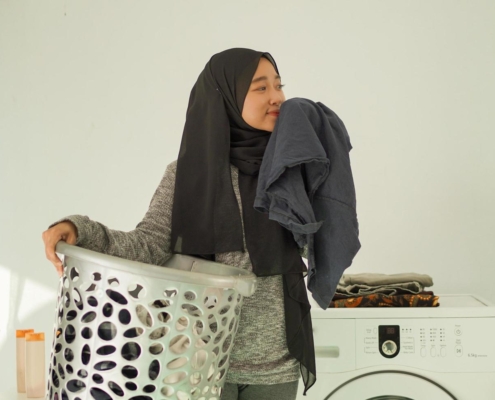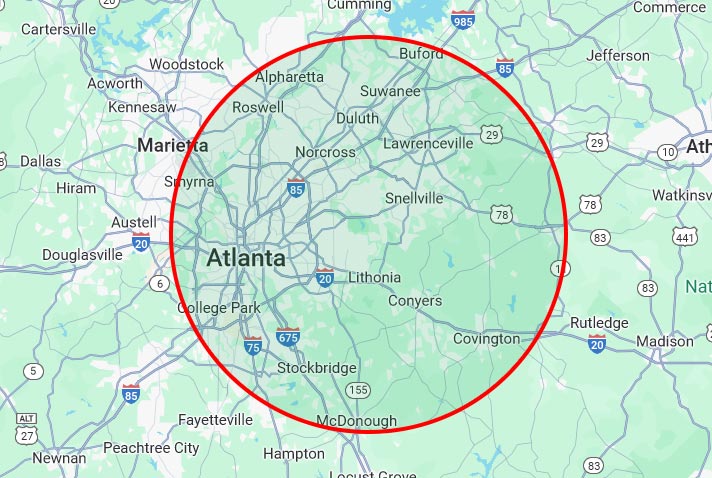Why Your Dryer Isn’t Heating and How to Fix It
 Dealing with a dryer that refuses to heat can be a real headache, disrupting your daily routine and leaving laundry piling up. Understanding why your dryer isn’t working as it should is crucial in resolving these frustrating issues efficiently.
Dealing with a dryer that refuses to heat can be a real headache, disrupting your daily routine and leaving laundry piling up. Understanding why your dryer isn’t working as it should is crucial in resolving these frustrating issues efficiently.
In this article, we’ll explore the common causes of dryer heating problems and offer practical solutions to get your appliance back in action. Whether you’re tackling the task yourself or considering hiring a professional repair company, this article will dive into the essentials of appliance repair and put an end to your dryer woes.
Article Summary:
- Understanding the Basics: How a Dryer Heats
- Common Causes of a Dryer Not Heating
- Troubleshooting Your Dryer: Step-by-Step Guide
- The Role of the Heating Element in Dryer Performance
- Thermostats and Thermal Fuses: What You Need to Know
- Electrical Issues: When Your Dryer Won’t Heat
- Professional Repair vs. DIY: Making the Right Choice
- Preventative Maintenance Tips for Your Dryer
- Keeping Your Dryer Running at Peak Performance with Comfort Appliance Repair
1. Understanding the Basics: How a Dryer Heats
Before diving into troubleshooting, it’s important to have a basic understanding of how your dryer works. Most modern dryers use an electric or gas heating system to dry clothes. The heating element heats up when electricity passes through it, generating heat that is then circulated throughout the drum by a blower fan.
2. Common Causes of a Dryer Not Heating
There are several reasons why your dryer may not be producing heat. These include:
- A blown thermal fuse, which can occur if the dryer overheats and shuts off power to prevent a fire.
- Faulty thermostats, which regulate the temperature inside the dryer drum.
- A defective heating element, which is responsible for producing heat in electric dryers.
- Clogged lint filters or exhaust vents, inhibiting proper air flow and causing overheating.
3. Troubleshooting Your Dryer: Step-by-Step Guide
To determine the cause of your dryer not heating, follow these five easy steps:
- Check for power issues by ensuring that the dryer is plugged in and the circuit breaker has not tripped. If it has, reset it and try running your dryer again.
- Clean out lint filters and exhaust vents to ensure proper air flow.
- Inspect the heating element for any visible damage or signs of wear and tear.
- Test the thermostats and thermal fuse with a multimeter to see if they are functioning properly.
- If these steps do not resolve the issue, it may be time to call for professional dryer repair.
4. The Role of the Heating Element in Dryer Performance
The heating element is the key component responsible for producing heat in electric dryers. Over time, this element can become damaged or burnt out, resulting in your dryer not producing any heat at all. In some cases, only certain areas of the heating element may fail, leading to uneven drying or no heat during specific cycles.
5. Thermostats and Thermal Fuses
Thermostats and thermal fuses work together to regulate the temperature inside your dryer. If either of these components becomes faulty, it can result in a lack of heat in your appliance. These parts are relatively inexpensive and easy to replace, making them a common solution for heating issues.
6. Electrical Issues
If you have an electric dryer, electrical issues can also be a culprit for no heat. Check the power cord and outlet for any damage or loose connections. It’s also possible that the terminal block connecting the cord to the dryer has burned out, requiring replacement. Read more about serious dryer issues in our guide “Signs It’s Time For a New Washer/Dryer.”
7. Professional Repair vs. DIY: Making the Right Choice
Some dryer heating problems may require professional dryer repair, especially if they involve electrical issues or complex internal components. However, many common causes of dryer heating problems can be easily resolved with some troubleshooting and DIY repairs.
Before attempting any repairs, always consult your dryer’s manual and ensure that the power is turned off before working on the appliance. If you are not comfortable with handling these tasks yourself, it is best to leave it to a professional technician. A professional appliance repair service will have the expertise and tools to diagnose and fix any issues efficiently, saving you time and frustration.
8. Preventative Maintenance Tips for Your Dryer
 To keep your dryer in good working condition and prevent future heating issues, here are some preventative maintenance tips:
To keep your dryer in good working condition and prevent future heating issues, here are some preventative maintenance tips:
- Clean out lint filters after every use and remove any built-up lint from the exhaust vent. This critical task also helps prevent dryer vent fires.
- Regularly inspect and replace worn or damaged parts such as thermostats, thermal fuses, and heating elements.
- Do not overload your dryer as this can cause strain on internal components.
- Consider having your dryer professionally serviced every 1-2 years to ensure optimal performance.
9. Keeping Your Dryer Running at Peak Performance with Comfort Appliance Repair
If you’re experiencing ongoing issues with your dryer not heating, it may be time to enlist the help of a professional appliance repair company like Comfort Appliance Repair. Our team of experienced technicians is equipped to handle a wide range of dryer problems and will work quickly and efficiently to get your appliance back in top shape. Call us today for trusted dryer repair in the Atlanta area.
By Dennis Godynuk, Owner of Comfort Appliance Repair
Dennis Godynuk is the owner of Comfort Appliance Repair in Covington, GA. Comfort Appliance provides fast and reliable repair services for all major household appliances. Dennis and his team of experienced technicians can tackle any problem, from broken refrigerators to malfunctioning dishwashers, and their prices are very competitive. Customers can rest easy knowing that their appliances are in good hands when they call Comfort Appliance Repair.



